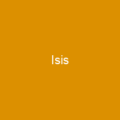Who is Abu Mohammad al-Julani?
Abu Mohammad al-Julani, born Ahmed Hussein al-Sharaa in 1982, has been a pivotal figure in the Syrian civil war and beyond. His journey from a studious youth to a militant leader is a complex tale of radicalization, conflict, and political maneuvering.
Early Life and Radicalization
Al-Sharaa’s family roots trace back to the Golan Heights, where his father was an Arab nationalist student activist. The family moved to Damascus in 1989, settling in Mezzeh. Al-Sharaa himself was described as studious but unremarkable, wearing thick glasses and avoiding attention. His life took a radical turn when he was inspired by the Palestinian Second Intifada in 2000. Just weeks before the 2003 US invasion of Iraq, al-Sharaa traveled to join the ranks of al-Qaeda in Iraq (AQI).
Al-Qaeda and Beyond
Al-Sharaa quickly rose through AQI’s ranks, becoming a close associate of Abu Musab al-Zarqawi. However, his relationship with al-Zarqawi was complicated; he denied ever meeting him. Al-Sharaa was captured by American forces in 2006 and spent over five years in prison before being released in 2011.
Upon his release, al-Sharaa returned to Syria with significant funding and a mandate from al-Qaeda to expand its presence. He established Jabhat al-Nusra (JN), an alliance with the Islamic State of Iraq (ISI). However, he began distancing himself from transnational jihadist ideology, framing JN within the context of a nationalist Syrian struggle.
Clashes and Rebranding
The relationship between al-Sharaa and Abu Bakr al-Baghdadi was tense. Al-Baghdadi unilaterally announced that al-Nusra would merge into ISI to form ISIS in April 2013, but al-Sharaa pledged allegiance directly to Ayman al-Zawahiri, who confirmed al-Nusra’s independence.
Al-Sharaa clashed with ISIS over control of territory and ideology. By February 2014, efforts to end the dispute had failed, leading al-Qaeda to formally sever ties with ISIS. Al-Sharaa denounced ISIS, likening them to the Iraqi ‘sahawat’ who fought against AQI alongside U.S. forces.
Hay’at Tahrir al-Sham and Beyond
In 2016, al-Sharaa cut al-Nusra’s ties with al-Qaeda and merged it with other organizations to form Hay’at Tahrir al-Sham (HTS). Under his leadership, HTS established an administration in the territory it controls, collecting taxes and providing public services. Al-Sharaa’s administration faced criticism for taxation policies and economic impact.
Protests erupted in March 2024 against al-Sharaa’s rule, with demonstrators demanding the resignation of Idlib Governor Hay’at Tahrir al-Sham leader Abu Omar al-Sharaa. In response, al-Sharaa released detainees and promised local elections and employment opportunities for displaced persons.
International Relations and Future Plans
Turkey reduced trade through its border crossings with Idlib, affecting HTS’s revenue. Al-Sharaa attempted to take over other Turkish-administered areas in northern Syria. In late November 2024, HTS led its Deterrence of Aggression offensive against the Syrian Arab Army, capturing Aleppo.
Al-Sharaa declared ‘diversity is a strength’ and established administrative bodies to restore basic services. He pledged to protect minority groups and establish a government grounded in institutions and a council chosen by the people. On December 6, al-Sharaa declared his goal was to remove Assad from power and facilitated the return of Syrian refugees.
The US lifted a $10-million reward for his arrest on December 20. Al-Sharaa met with Turkish officials on December 12, marking the first diplomatic delegation since Assad’s overthrow. He expressed views on Israel, stating that after the fall of Assad’s regime, Israel no longer has excuses for attacking Syrian territory and advocating for diplomatic solutions instead of military adventures.

Abu Mohammad al-Julani’s journey is a testament to the complex dynamics of conflict and politics in the Middle East. His story raises questions about the impact of external policies on local radicalization and the potential for change through diplomacy and governance.
The future of HTS under al-Sharaa remains uncertain, but his vision for Syria’s future is clear: a nation where diversity thrives and the people have a say in their own destiny. Can we truly understand these leaders without considering the broader context of regional politics and history? The answer lies not just in their actions but in the intricate web of forces that shape their decisions.
You want to know more about Abu Mohammad al-Julani?
This page is based on the article Abu Mohammad al-Julani published in Wikipedia (retrieved on December 23, 2024) and was automatically summarized using artificial intelligence.





